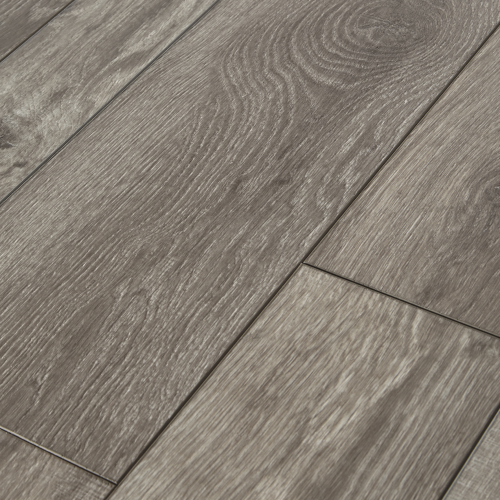Have you ever moved into a new home and noticed that the floors seem to be shifting, groaning, or even cracking? This unpleasant experience is often linked to improper acclimation of materials, particularly when it comes to things like hardwood or laminate flooring. It’s a crucial step that often gets overlooked, leading to avoidable issues down the line.

Image: www.pinterest.com
So, do you need to acclimate laminate flooring? In a nutshell, yes! It’s a critical process that ensures the stability and longevity of your beautiful new floors. This article will delve into the intricate world of laminate flooring acclimation, exploring the ‘why’, the ‘how’, and the ‘what-ifs’ to help you make informed decisions for your home.
Why Acclimate Laminate Flooring?
Imagine your new laminate flooring as a delicate flower – you wouldn’t want to bring it straight from the cold outdoors into a warm room, would you? Just like that delicate flower, laminate flooring is sensitive to temperature and humidity changes. Abrupt transitions can lead to warping, buckling, and even cracking, ruining your flooring and potentially jeopardizing your entire floor installation.
Here’s why acclimation is so important:
- Expansion and Contraction: Laminate flooring, like any other wood-based material, expands and contracts with changes in temperature and humidity. The core layer, typically made from high-density fiberboard (HDF), is highly susceptible to moisture fluctuations. If you install it without proper acclimation, these changes can cause the planks to either expand too much and buckle or contract excessively and gap
- Preventing Gaps and Buckling: Acclimation allows the flooring to adjust to the environment before it’s installed. This minimizes gaps between planks, and reduces the chances of buckling later on.
- Ensuring Durability: Proper acclimation helps prevent damage over time. A stable floor means a more durable and long-lasting installation, preventing premature wear and tear.
How to Acclimate Laminate Flooring: A Step-by-Step Guide
Acclimating laminate flooring is a straightforward process that requires a bit of patience. Here’s a step-by-step guide:
- Unpack the Flooring: Take all the laminate planks out of their packaging and spread them out in the room where they will be installed. This allows them to breathe and adjust to the room’s temperature and humidity levels.
- Ideal Environment: The ideal acclimation environment is similar to the place where the flooring will be installed. Maintain a consistent temperature and humidity levels, preferably between 65°F and 75°F (18°C and 24°C) with 30-50% relative humidity.
- Acclimation Time: The amount of time needed for acclimation depends on several factors, including the type of flooring, the size of the room, and the existing environmental conditions. A general rule of thumb is to allow 48-72 hours for acclimation.
- Check for Moisture: It’s essential to ensure that the subfloor is dry and free from any moisture. This is crucial to prevent moisture from affecting the laminate planks during the acclimation process.
- Storage: Always keep the laminate flooring in a clean and dry area, avoiding direct sunlight or other heat sources.
Important Considerations for Acclimation
While the steps mentioned above provide a solid framework, consider these additional factors for successful acclimation:
- Seasonality: Acclimation is especially crucial during extreme weather conditions, such as very hot summers or cold winters.
- Existing Conditions: If your home has a history of humidity fluctuations or temperature swings, you may need to extend the acclimation period.
- Heating and Cooling: During the acclimation process, make sure that your HVAC system is operating normally and maintaining a stable temperature.
- Humidity Control: Use a dehumidifier or humidifier to regulate the humidity level, ensuring it falls within the recommended range.

Image: mromavolley.com
Understanding Acclimation Exceptions
While acclimation is generally recommended for laminate flooring, there are a few exceptions:
- Pre-Acclimated Flooring: Some manufacturers offer pre-acclimated laminate flooring, which is designed to be installed right out of the package. Check the product specifications to see if your chosen flooring requires acclimation.
- Small Projects: If you are undertaking a small project, such as replacing a few planks in a small room, acclimation may not be strictly necessary. However, it’s still a good practice to allow the flooring to sit in the room for a short period before installation.
- Installation in a Controlled Environment: If the flooring is being installed in a controlled environment, such as a workshop or a commercial space where the temperature and humidity are tightly monitored, acclimation may be less critical.
Expert Insights and Tips
Here are some valuable tips from experienced flooring experts:
- Consult with Professionals: If you’re unsure about the specific requirements for your laminate flooring, consult with a flooring installer or a professional contractor. They can offer personalized advice based on your specific needs.
- Trust the Manufacturer’s Instructions: Always follow the manufacturer’s recommendations for acclimation, as they are tailored to the specific type of flooring you’ve chosen.
- Prioritize Patience: Acclimation requires time and patience. Don’t rush the process, as it could negatively affect the final installation.
Do You Need To Acclimate Laminate Flooring
Conclusion: The Key to a Seamless and Long-Lasting Floor
Acclimating laminate flooring is a crucial step that can significantly impact the overall success of your flooring project. It helps prevent warping, buckling, and other issues, ensuring a stable and long-lasting installation. By following the steps outlined in this article and consulting with experts, you can install beautiful and durable laminate flooring that will enhance your home for years to come. Remember, a little extra time and effort now can save you headaches and financial woes later on. So, take the time to acclimate your laminate flooring and reap the rewards of a seamless and long-lasting flooring installation!






